DISCOVER INSIGHTS IN OUR DOWNLOADABLE CASE STUDY
3D printed components require post-processing operations, such as dust removal, sanding, and surface finishing, before they can be used. These steps, often performed manually, are essential to enhance the quality of the components, ensuring functionality, precision, and aesthetics. Depowdering stations for post-processing in 3D printing play a key role in streamlining these processes.
Our client focuses on post-processing equipment for cleaning 3D printed components in sealed stations. These manual cleaning booths enable operators to safely and efficiently remove residual dust while refining surfaces. Our industrial vacuums seamlessly integrate with these systems, ensuring reliable collection of reactive and non-reactive dust during post-processing operations.
Post-processing cleaning stations are specifically designed to safely clean and enhance the quality of 3D printed components while reducing environmental risks and protecting operators from exposure to hazardous particles.
Operators perform cleaning tasks without direct contact with the particles by inserting their arms, equipped with proper personal protective equipment (PPE), into the machine’s sealed work chamber. All operations are carried out within this enclosed environment, ensuring optimal safety. Before the chamber is opened, an automatic cleaning cycle eliminates any remaining dust, maintaining a safe workspace.
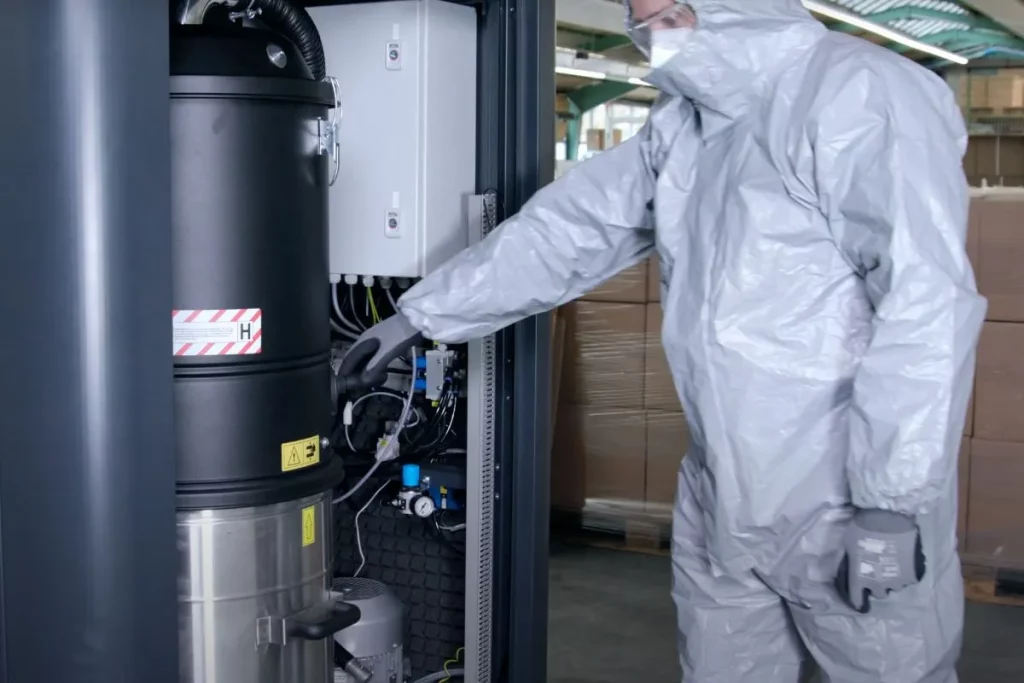
Post-processing equipment requires advanced filtration and vacuum systems to ensure a controlled and sealed environment. Our industrial vacuums are designed for seamless integration at the back of the machine, allowing easy maintenance access. These systems continuously extract dust produced during post-processing, maintaining a clean workspace and ensuring efficient filtration performance.
In 3D printing, powders are categorized primarily as reactive or non-reactive based on their chemical properties and the risks involved in handling them.
Selecting an industrial vacuum with the right features is crucial for safely and efficiently managing different types of dust, ensuring both high performance and operator safety.
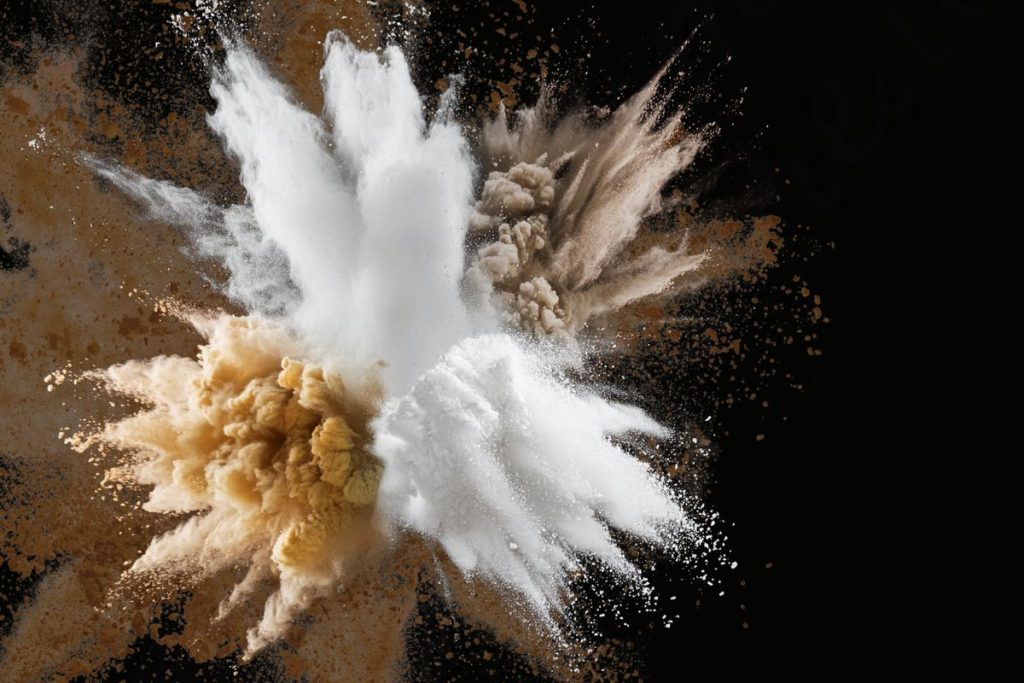
These powders are highly reactive to factors like oxygen, moisture, and heat, which can significantly increase the risk of combustion or explosion if not handled correctly. Common materials include:
To maintain a safe working environment, it is crucial to implement proper handling and management measures, taking into account their sensitivity to external conditions such as oxygen, moisture, and heat.
While these materials have a lower reactivity risk, they can still produce harmful particulate matter that poses health threats if inhaled. Examples include:
Proper handling and safety precautions are essential to protect operators’ health and prevent dust inhalation risks.
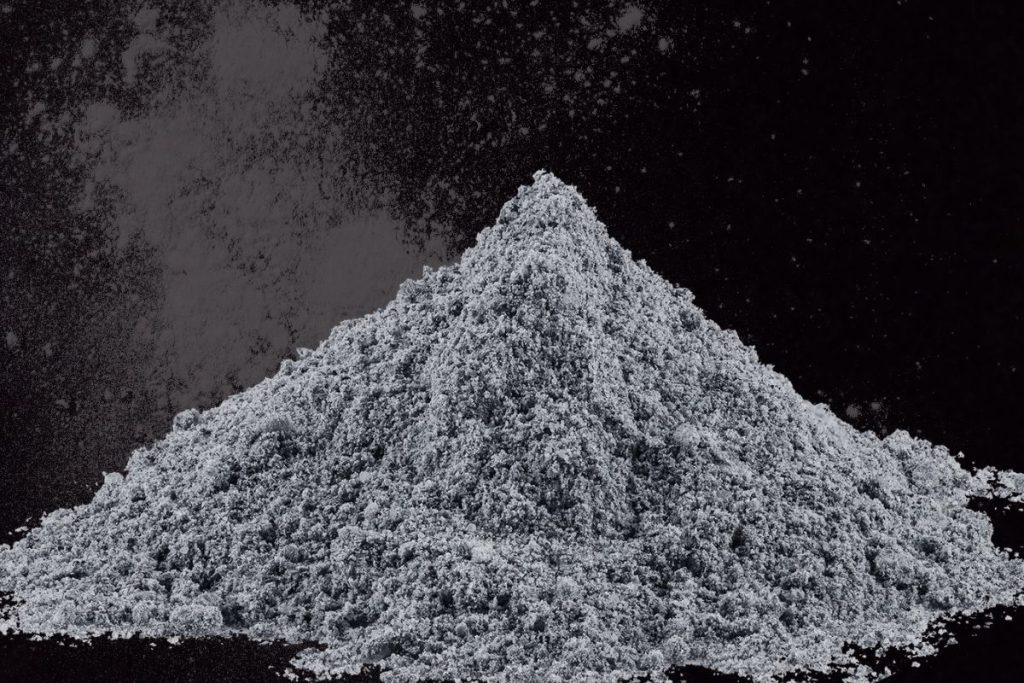
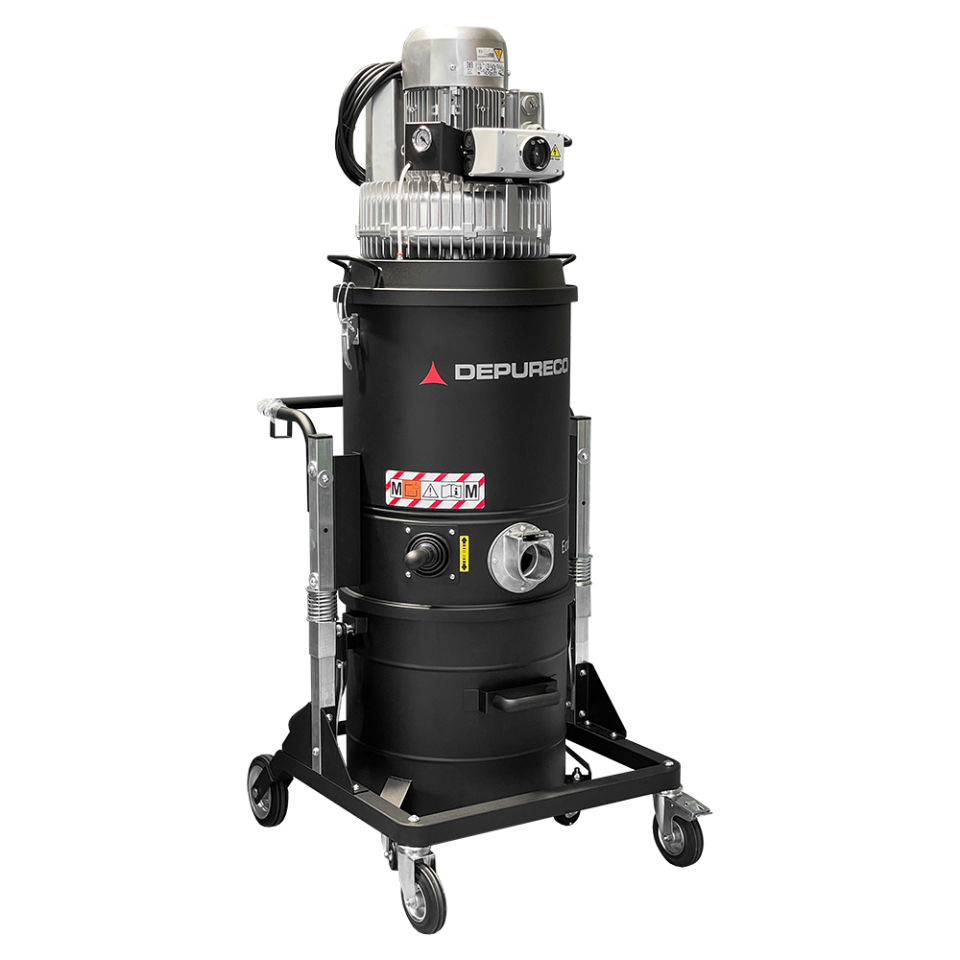
For non-reactive dust extraction, we have installed our industrial vacuum Ecobull T inside the stations, equipped with a side channel turbine and M-class star filter.
Due to its specifications, the vacuum ensures optimal performance for continuous, uninterrupted vacuuming.
The M100 Additive Manufacturing version is specifically crafted to remove conductive metal dust. This vacuum cleaner features a powerfull single-phase brushless motor, delivering exceptional performance and maximum safety.
To collect dangerous particles, this product incorporates an advanced explosion-proof system: the vacuumed conductive metal powder is directly immersed in a bath of inert liquid within the container.
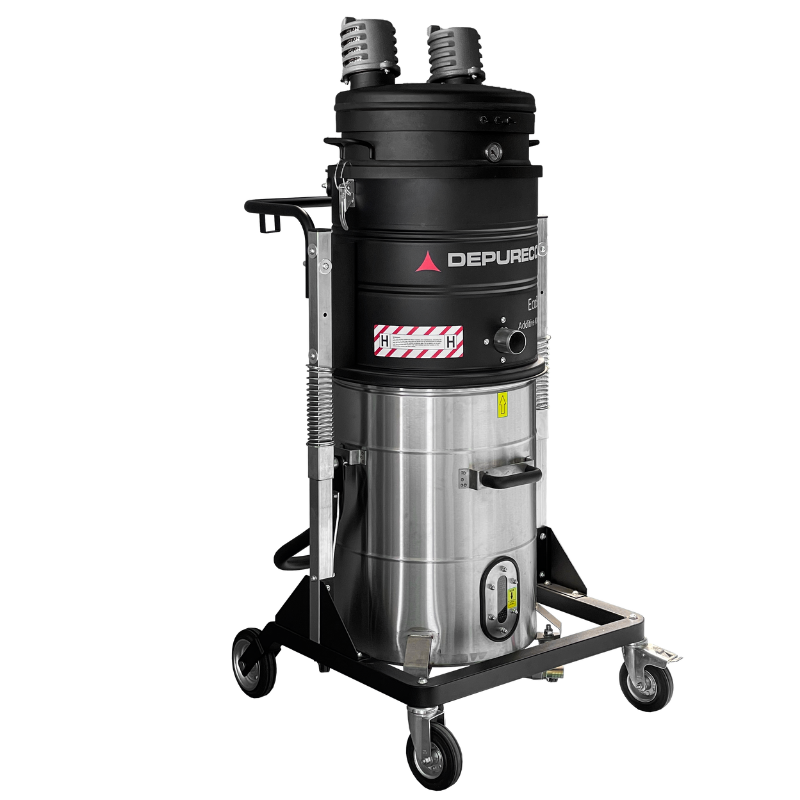
For more information on our cleaning station vacuums for 3D printing post-processing, or if you need a customized solution tailored to your requirements, feel free to contact us for a free consultation!